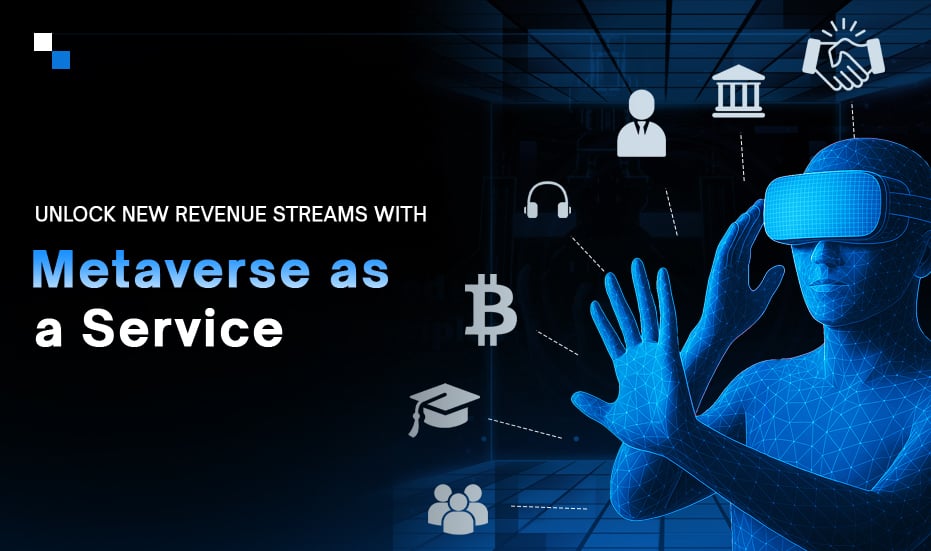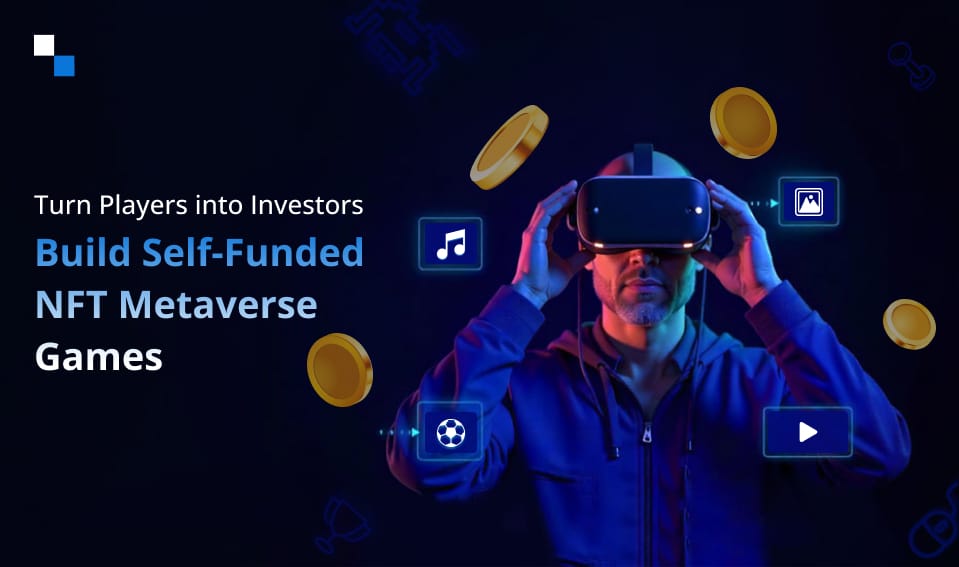
DeFi: The New Building Block for The Metaverse Landscape
May 17, 2022
How to Create a Solana-based Wallet like Solflare
May 17, 2022As Facebook parent Meta, Apple, Microsoft, and Google are ready to introduce Innovative systems, applications and products in what was once a tiny niche for beta testers are likely to become a part of metaverse development.
The word “metaverse” refers to technology and devices that facilitate interaction within a simulated world and operate in three-dimensional virtual settings and extract online data and combine it instantaneously with the physical world.
As per a report published in Statista, in october 2021, market capitalization of the metaverse, Facebook and gaming worldwide touched revenue of 14.8 Trillion USD.
Metaverse development is the most critical agenda for most technology companies looking to create their niche in the market as a prominent metaverse development company.
While the Metaverse is presently accessible through smartphones, supporters believe it will someday be accessible via powerful augmented worlds or interactive 3d headsets.
About The Metaverse
We define the Metaverse as a younger breed of the Web that allows innovators (brands, consumers, AR/VR, AI, or a blend of all) to create interconnected, sophisticated, and interactive experiences based on interests or usefulness.
The Metaverse will shorten distances and redefine how we can do things, including exchanging data, transporting, studying, going to the doctor, socializing with friends, and managing businesses.
This concept contains the idea that early phases of the Metaverse occur in restricted forms now and will keep on growing throughout time. Organizations have numerous chances to initiate the transformation through experimenting and growing within the metaverse elements.
As we reach the final phase of industrialization, the boundaries between material, computational, and natural sciences will keep going to dissolve, delivering a whole new reality with entirely new opportunities. Enterprises that have leveraged from prior experiences will be ahead of the game when creating their identities in this new world.
The Metaverse Value Chain Explained
Whereas the “what” of the Metaverse can be complicated, the “how” is somewhat more straightforward. The value chain of creating a metaverse environment is depicted here. The value chain comprises three main layers at the highest level: innovation, connectivity, and confluence. Each layer has a wide range of technologies and applications that will support every value chain element.
We’ve emphasized a few essential pieces of technology, and suppliers demonstrate how they support the various parts individually. It remains to be seen whether service providers will eventually “win” in becoming the significant caretakers for specific sections of the value chain, although major companies are already in place.
Develop your Own Metaverse Gaming Platform with Us
Schedule Free DemoWhy Is It Important to Understand Metaverse Technologies before talking about Metaverse development?
Those certain moral obligations are exactly why entrepreneurs must grasp the knowledge about various technologies propelling the Metaverse ahead and the influence they could have on participants, the ecosystem, and our culture. Enterprises can create new methods to enrich our society through purposeful applications of VR connectedness that enhance our system and keep the knowledge economy thriving by comprehending these innovations.
Furthermore, recognizing these tools is critical. When more complex approaches for usage in Metaverse projects are created, the average cost of applications developed in the United States will rise. When preparing for their next move, business owners must grasp what they must concentrate on.
Enterprises must also recognize that as the Metaverse ecosystem expands, so does the kind of data. Creating great digital marketing tactics with these vivid, online contexts is critical as the business progresses.
Let’s explore the essential components of Metaverse development one by one:
Innovations with AR/VR
At its core, the Metaverse is characterized by its unique customer experience, which would not be achievable without AR and VR. The phrases Metaverse and Virtual reality are sometimes used together, although they are somewhat distinct. The Metaverse is just linked to virtual reality encounters. A solitary gamer VR gameplay is not a component of the Metaverse. However, a collaborative VR gaming session is. The Metaverse can keep expanding outside VR to include even more sophisticated technology.
Virtual shopping and trial rooms are also gaining popularity to improve e-commerce operations. By removing the barriers of internet-based purchasing, customers may select the most pleasing thing without sacrificing their own residence’s convenience. The Metaverse can potentially build on this innovation by thoroughly engaging you in a digital version of the retail outlet in VR.
Nevertheless, the VR experience necessitates the purchase of sophisticated hardware, that’s not the most cost-effective alternative for many individuals. Notwithstanding this, AR (AR) innovation can be the following primary determinant responsible for Metaverse’s expansion.
Artificial Intelligence (AI)
Despite extended reality dominating the Metaverse, AI technology is a critical innovation underneath the stuff to let the Metaverse function. Although AI is still more beneficial for information computations and projections, this can help develop methods that aid in character development, speech recognition and interpretation, and environment construction. AI can also focus on sensors for monitoring our neural impulses and muscle rhythms, which can alter how we engage in VR. AI can also contribute toward broadly inclusive encounters by delivering services such as image classification for people with visual impairments.
The Metaverse requires multi-dimensional surroundings to be a genuinely engaging ecosystem. There are numerous 3D designing tools available to firms interested in developing Metaverse or VR-based solutions. Apart from constructing objects from the beginning in applications, sensors may now be used to rebuild objects in 3D. In some instances, smartphones with thermal scanners can achieve this. This can aid in the ‘digitization’ of things for usage in dynamic reality.
Digitization of items can also benefit production units. For customers, 3D technology can increase supply chain transparency by helping employees better understand where a product is manufactured and how it’s handled.
Talk to our Experts to Get Free Consultation
[widget id=”custom_html-3″]
Fog Computing
Fog computing is essential for commercial settings and facilitates quick data transmission with fewer latencies required for elevated interactive activity in online reality.
While many individuals worldwide enjoy technology, cloud computing literally cannot manage the computing resources required to keep the system running. On the other hand, Blockchain technology can take that computing nearer to each consumer, determining the final delivery much more seamlessly.
5G/6G
Although the Metaverse is all about interconnecting immersive experiences, connectivity with VR can consume a massive bandwidth. 5G connectivity, one of the most sophisticated mobile advancements, has improved recently, giving the resources needed for real-time information exchange.
Returning to Fog computing, increased connectivity via 5G implies that VR processing might be done on the device and transmitted to your headgear, potentially shrinking the size of Virtual reality headsets in the coming years to make them more convenient to wear for users. Some countries are already working on testing 6G capabilities, and they will have the edge in developing the Metaverse economy. Companies developing Metaverse are already thanking their luck since the advent of 6G will open doors to new opportunities.
Conclusion
Even though the Metaverse development began in response to criticism of businesses’ influence on people’s personal lives, this does not imply that interconnected virtual spaces are inadequate. If we approach these innovations responsibly and appropriately, we can develop means to enable communication while growing our enterprises’ earnings. These innovations are not supposed to supplant the physical universe but instead expand our influence over the Web to exchange ideas in areas we previously could not. It is up to us and Metaverse developers to shape how the Metaverse grows; therefore, let us create the future we wish to see.



